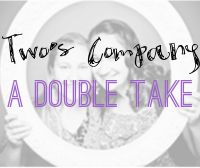I don't mean "the masters" as in the people who sit back and point fingers and tell you how you ought to be a better writer and show instead of tell and that sort of thing. (though that is often helpful) I mean the masters who are beloved authors and whose books are destined to last throughout literature-dom. :)
I will begin with a demonstration of How Not To Do It, by Sir Walter Scott, who excelled at lengthy descriptions:
"The human figures which completed this landscape were in number two, partaking, in their dress and appearance, of that wild and rustic character which belonged to the woodlands of the West Riding of Yorkshire at that early period. The eldest of these men had a stern, savage, and wild aspect. His garment was of the simplest form imaginable, being a close jacket with sleeves, composed of the tanned skin of some animal, on which the hair had been originally left, but which had been worn off in so many places that it would have been a difficult to distinguish, from the patches that remained, to what creature the fur had belonged. This primeval vestment reached from the throat to the knees, and served at once all the usual purposes of body-clothing; there was no wider opening at the collar than was necessary to admit the passage of the head, from which it may be inferred that it was put on by slipping it over the head and shoulders, in the manner of a modern shirt, or ancient hauberk. Sandals, bound with thongs made of boar's hide, protected the feet, and a roll of thin leather was twined artificially round the legs, and, ascending above the calf, left the knees bare, like those of Scottish Highlander. To make the jacket sit yet more close to the body, it was gathered at the middle by a broad leathern belt...."
And so on and so on and so on until you wonder whether you accidentally stumbled into a costume designer 101 class instead of trying to enjoy Ivanhoe. Now, do take care in my criticism, to remember that I count Ivanhoe as one of my favorite classics, despite wading through page upon page of trifling descriptions.
This technique, of choking the reader with superfluous finery was much used during the 1800's. I guess it is just a preference. There are cases when this can be used as an effective tool. Take the opening of Charles Dicken's Little Dorrit. He uses an extremely long description of the glaring sun at the Quarantine station in Marseilles to convey actual physical discomfort to the reader. I read this book in December, but by the end of the first few pages, I truly felt hot. :) Look it up. You can read the first chapter here:
I feel like Dickens used his length to good effect, while Sir Walter Scott dabbled too long and too far in bits and pieces. However, this technique of long-winded-ness, even if it does have a point, is looked down upon these days.
The general consensus is that less is more. Showing things instead of telling them. Adding the description here and there like hidden nuggets, instead of taking time to spotlight it in its own paragraph. Take this excerpt from Jan Karon's Out To Canaan:
"At the hardware, Dora Pugh shook her head and sighed. Betrayed by yesterday's dazzling sunshine, she had done display windows with live baby chicks, wire garden fencing, seeds, and watering cans. Now she might as well haul the snow shovels back and do a final clearance on salt for driveways."
Here Jan Karon told us what the window of the hardware store looked like while still having it move the plot along and tell us something...that it was still cold out. :) The only danger with less description is that the story can begin to feel as if it's happening in a void.
The third, and one of my favorite kinds of description is one that Charles Dickens uses a lot: that of unusual comparisons and word choices. Here's an example in The Pickwick Papers:
" 'Stand aside then. Now for it.' The boy shouted and shook a branch with a nest on it. Half a dozen young rooks in violent conversation, flew out to ask what the matter was. The old gentleman fired by way of a reply. Down fell one bird and off flew the others."
"...in violent conversation, flew out to ask what the matter was." Isn't that so clever? Dickens is definitely a favorite of mine. :)
Try out the various styles of description in your own writing and see what works best! Pair them up and find the best style for you.















1 comment:
Wow. Sir Walter Scott is definitely long-winded, isn't he?
Great post! Description is peachy and all, and I love details, but there's always a limit. And once those details go too far, it's just a put-off.
Post a Comment